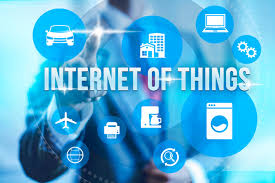Source:analyticsinsight.net
Over the last few years, the role of Chief Security Information Offers (CISOs) has changed at an unprecedented rate. They are responsible for establishing security strategy, managing safety risks, and ensuring data assets are protected. The shift in a CISO role is largely driven by the deployment of Cyber-Physical Systems such as IoT devices which is used across various applications in diverse industries. However, these devices that are connected to the Internet are poised to become a novel challenge to enterprise security. So, this is the CISO’s accountability to create a strategy that addresses ever-increasing security risks.
As more businesses will deploy IoT devices, there are more chances of cyberattacks. While agent-based technologies are not able to safeguard these embedded devices from malicious threats, CISOs need to deliver new strategies to overcome IoT security risks.
IoT is not only limited to enterprises. It also has applications for connected home devices, from security systems to Wi-Fi-powered fridges, lighting, printers, and watches. Though the interest in connected devices increases, there is some criticism over the industry regarding how secure these devices are. It is estimated that there will be 6.4 billion connected devices in use by the end of 2020, and more than half of major new business processes and systems will integrate elements of IoT.
The CISO Role in IoT Security
In the coming years, it is evident that new security and privacy implications will likely to rise as IoT is increasingly incorporated into business processes. In this case, CISOs will need to figure out which devices are connected, and how to store and secure data that IoT devices produce.
CISOs must understand how the cyber threat landscape is evolving and how that could affect the security risks facing their organizations. They will need to adapt and take a broader view of the assets that they are tasked with securing.
There are a wide array of attack vectors that IoT can draw within an enterprise, including network and firewall weaknesses, malicious mobile apps and malware downloaded through spear phishing, among others. Also, connected devices can bring a wider range of possible avenues to exploit.
Modern IoT cybersecurity solutions are built on several common tenets such as visibility, security policy creation, security policy enforcement and utilization. The vendors that focus on addressing visibility and utilization are highly distinguished. As some are able to classify an IoT device-type, others are delivering device-specific capabilities. Also, while some have the ability to provide selected utilization metrics of devices communicating through commonly known protocols, others are delivering extraordinary levels of detail, instead of how unique or striking the protocol.
Preparing for the Future
It is not always possible for vulnerable devices to be updated as well as for vendors to cure these issues. Companies will likely to see the generation of hardware devices in years to come that will need to be replaced when critical vulnerabilities occur.
For future CISOs, it will be difficult to deal with challenges that connected devices pose, including reduced visibility of traffic going in and out of the enterprise. On the other hand, lack of resources, tools and capacity can thwart IT staff from being able to have a clear picture of a company’s network. Thus, in this scenario, CISOs must go beyond the computer systems and focus their efforts on all connected devices within the enterprise and involve them in their overall security planning and testing.
Hence, as the internet of things presents novel challenges for modern businesses, CISOs must consider a strategic approach that starts by comprehending the categories of IoT devices they use. They need to rely on segmentation in the process of ensuring IoT security, regardless of standard methods that they often practice to control general-purpose computers. Since no one is able to prevent all incidents, having a comprehensive containment plan based on real-world knowledge can be constructive.


